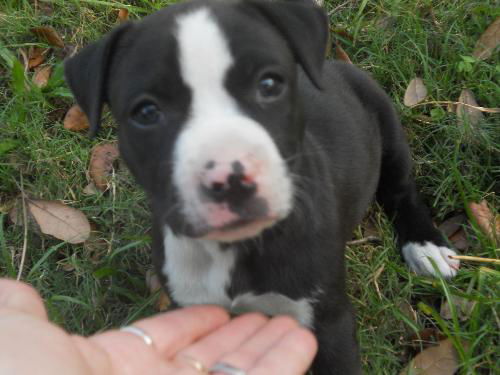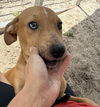
| My Rescue |
| Login to Remember your Favorite Animals and Breeds! |
Learn more about the Boxer.
Galway the St. Patrick's Day Puppy's brother, Ronan the St. Patrick's Day Puppy (adopted) can also be seen on our website.
Galway the St. Patrick's Day Puppy's brother, Jameson the St. Patrick's Day Puppy (adopted) can also be seen on our website.
Galway the St. Patrick's Day Puppy's sister, Darcy the St. Patrick's Day Puppy (adopted) can also be seen on our website.
Galway the St. Patrick's Day Puppy's brother, Verde the St. Patrick's Day Puppy (adopted) can also be seen on our website.
Galway the St. Patrick's Day Puppy's brother, Grady the St. Patrick's Day Puppy (adopted) can also be seen on our website.
Galway the St. Patrick's Day Puppy's brother, Irish the St. Patrick's Day Puppy (adopted) can also be seen on our website.
These adorable puppies are a prime example of why you should always spay and neuter your pets. They are the product of an accidental litter. We hope to find them great homes where they will always be cared for.
Foster Update: Galway is the smaller of the two pups (Clover and he are brothers) but he doesnt let that slow him down a bit. He can stand up to his bigger brother if he wants to. He is the more shy one but will speak his mind. He isn't a cuddler but is very loving and affectionate. He likes to find a spot out of the way to lay down and relax. He is really enjoying playing in the yard with his brother and is starting to recognize his name when called. He is a playful and happy puppy and is getting a little chub to him.
*** According to www.dogbreedinfo.com, the Labrador Retriever is a loving, affectionate, lovable, patient dog. Once known as the "St John's Dogs," the Labrador Retriever is one of the most popular breeds in the United States. Originally from Newfoundland, Canada the Labrador was trained to jump overboard into the icy waters to haul fisherman's nets to shore. Specimens were brought to England in the 1800's by English ships coming from Labrador, where the dog's fine retrieving instincts were honed and developed. One of the best family dogs and canine companions because of their gentle, loving disposition, the highly trainable Labrador also excels in drug detection, as a guide for the blind, and service dog for the disabled. The breed is also an outstanding obedience and field trial competitor. Highly intelligent, loyal, willing, and high-spirited. Lively and good-natured, they love to play, especially in water - for they love to swim. They have an excellent, reliable, temperament and are friendly, superb with children and equable with other dogs. They crave human attention and need to feel as though they are part of the family. Labs are easily trained. These dogs are watchdogs, not guard dogs, although some have been known to guard. They have a life expectancy of 10-12 years.
Other Pictures of Galway the St. Patrick's Day Puppy (click to see larger version):
 20k |
 20k |
 54.2k |
 26.8k |
 24.8k |
 34.1k |
 22.8k |
Copyright © Pet Rescue by Judy





